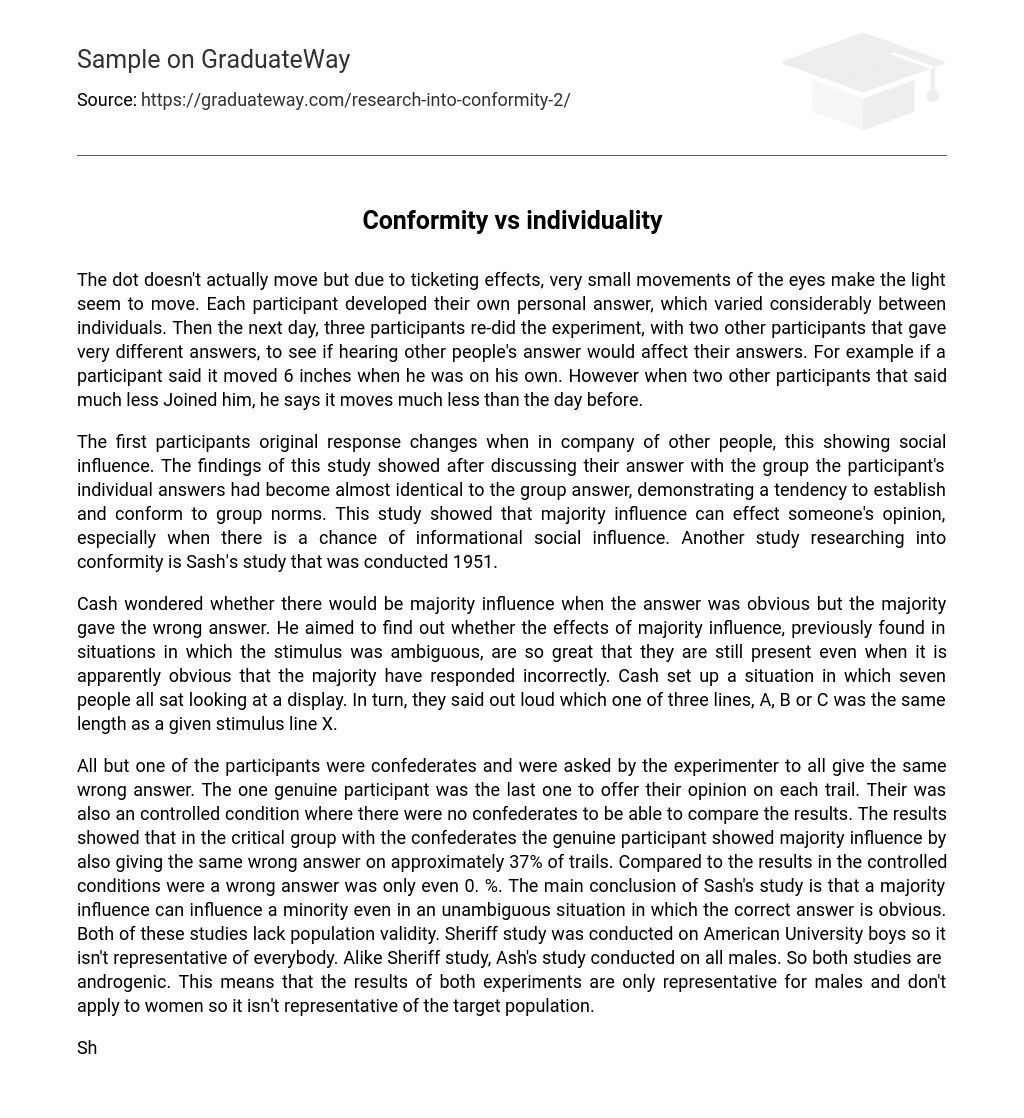The dot doesn’t actually move but due to ticketing effects, very small movements of the eyes make the light seem to move. Each participant developed their own personal answer, which varied considerably between individuals. Then the next day, three participants re-did the experiment, with two other participants that gave very different answers, to see if hearing other people’s answer would affect their answers. For example if a participant said it moved 6 inches when he was on his own. However when two other participants that said much less Joined him, he says it moves much less than the day before.
The first participants original response changes when in company of other people, this showing social influence. The findings of this study showed after discussing their answer with the group the participant’s individual answers had become almost identical to the group answer, demonstrating a tendency to establish and conform to group norms. This study showed that majority influence can effect someone’s opinion, especially when there is a chance of informational social influence. Another study researching into conformity is Sash’s study that was conducted 1951.
Cash wondered whether there would be majority influence when the answer was obvious but the majority gave the wrong answer. He aimed to find out whether the effects of majority influence, previously found in situations in which the stimulus was ambiguous, are so great that they are still present even when it is apparently obvious that the majority have responded incorrectly. Cash set up a situation in which seven people all sat looking at a display. In turn, they said out loud which one of three lines, A, B or C was the same length as a given stimulus line X.
All but one of the participants were confederates and were asked by the experimenter to all give the same wrong answer. The one genuine participant was the last one to offer their opinion on each trail. Their was also an controlled condition where there were no confederates to be able to compare the results. The results showed that in the critical group with the confederates the genuine participant showed majority influence by also giving the same wrong answer on approximately 37% of trails. Compared to the results in the controlled conditions were a wrong answer was only even 0. %. The main conclusion of Sash’s study is that a majority influence can influence a minority even in an unambiguous situation in which the correct answer is obvious. Both of these studies lack population validity. Sheriff study was conducted on American University boys so it isn’t representative of everybody. Alike Sheriff study, Ash’s study conducted on all males. So both studies are androgenic. This means that the results of both experiments are only representative for males and don’t apply to women so it isn’t representative of the target population.
Sheriff’s study was conducted in sass’s and Sash’s was conducted in the sass’s so the result’s lack temporal validity. So because they were done in the early 20th century, it people did. So the results are reflective of a conservative era. However they both have good internal validity. They were both conducted in a lab so the experimenter’s could control the IV well and recreate the right atmosphere. This means that the DVD was only getting manipulated by the IV not by other contributing factors you could of got if it was a field experiment for an example.





